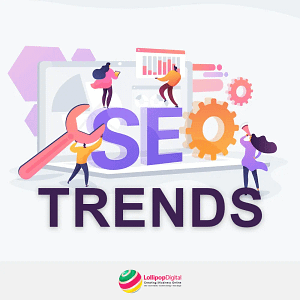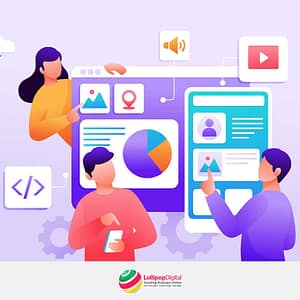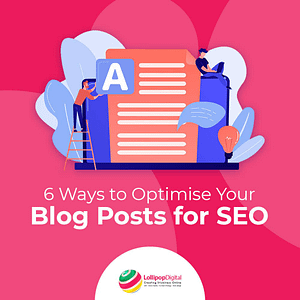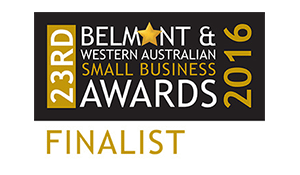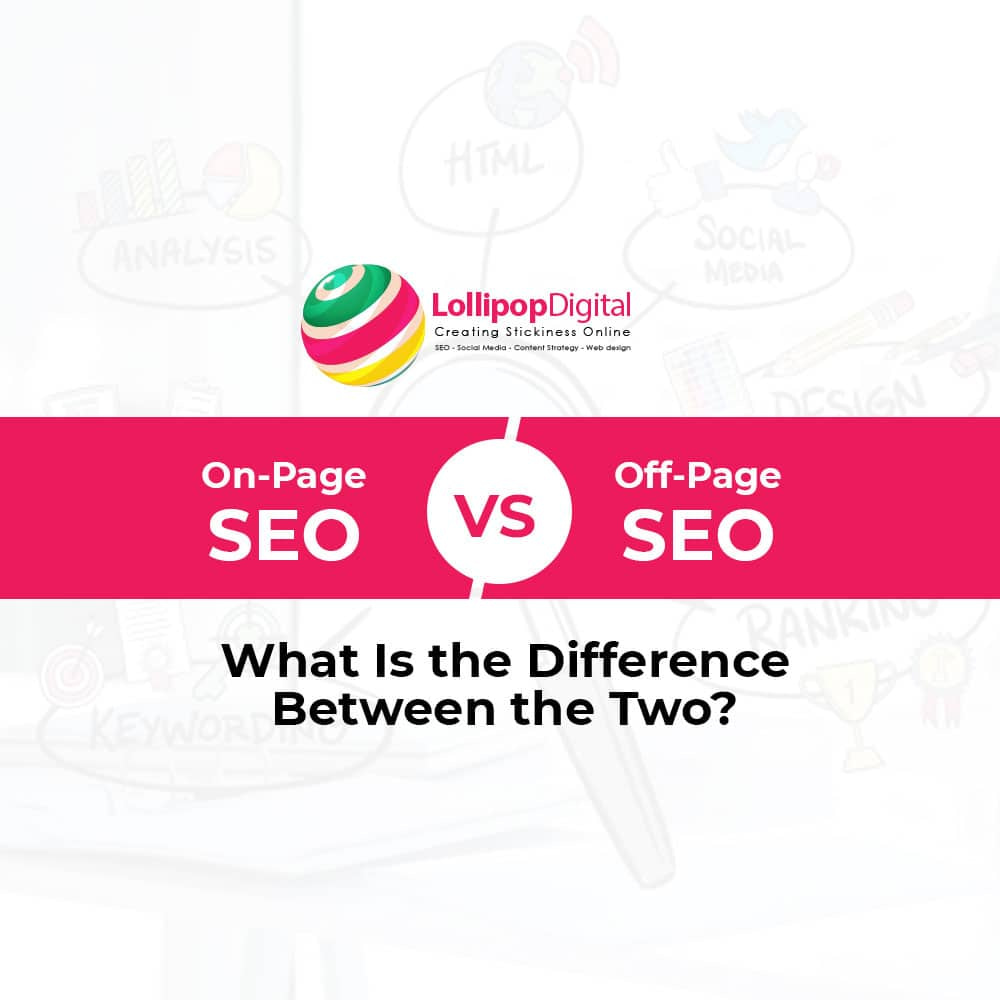
The only thing constant in this world is change, and Google’s algorithm is testament to that. Now, if you’re wanting to thrive in the dynamic digital environment, you need to continue evolving. If you’re running a website or marketing anything online, you’ll need a strategy that will address both on-page and off-page SEO.
We’ve created this comprehensive guide to help you understand the ins and outs of these SEO approaches. In this post, we’ll explain how they can help you reach your marketing goals.
On-Page SEO Explained
On-page SEO relates to anything done on the pages of a website. Whether you’re improving the content or fixing an element in the backend structure of a site, it means that you’re performing on-page SEO. The goal of on-page optimisation is to enable a web page to rank higher in search engine results pages, or SERPs. Moreover, it aims to drive targeted and organic traffic to a website. There are various factors in on-page SEO that influence rankings. They include:
Title Tag
When performing on-page SEO, you need to ensure that every page has a title tag containing targeted keywords. Here are some of the most effective tips for writing a title tag:
- Keep the title tag to 55-60 characters (including spaces)
- As long as it sounds natural, place the keyword closer to the beginning
- Avoid stuffing all your keywords into the title
- The end of the title tag should contain the brand name
Headings
There is a reason why headings are the biggest words on a web page. When web crawlers read through the page, they will give a little more weight to the headings than the rest of the copy. So, it’s best practice to incorporate target keywords into the headings of every web page. However, you still need to ensure that they reflect the content accurately. Moreover, H1s should be limited to one per page. All other headings should be H2 or H3.
URL Structure
One of the best on-page SEO practices is inserting the keywords into the URLs. Even so, you shouldn’t start changing all your URLs just so they contain your keywords. This should be done during the initial planning stages of the website. If your site has aged, you should only change the old URLs if you’re redirecting them to new ones. Your best bet is to consult a digital marketing specialist to understand the ideal approach to this.
Image Alt Text
When you’re choosing a content management system, you must ensure that it allows you to add an ‘alt text’ to all the images. Your average visitors won’t see the text, but it is critical for blind individuals who use screen reader software. The program will read the alt text to help users understand the image’s content. Similarly, web crawlers scan the images by reading the alt text. So, you need to use relevant keywords while describing the image accurately. Doing so on your alt text will help search engines to understand the content on your page.
The best on-page SEO practice here is to ensure that the alt attribute for every image complies with the Web Content Accessibility Guidelines (WCAG). For instance, the text should be around 8-10 words and it should describe the image thoroughly. Moreover, if you’re trying to use your targeted keyword, make sure that it still sounds natural. If relevant, you should also include a geo-locator.
Speed of the Page Load
Google ensures the best user experience for visitors, which is why it prioritises websites that load as quickly as possible. As such, optimising web pages to load faster is one of the top on-page SEO practices. Usually, SEO specialists use Google’s PageSpeed to assess a site’s speed on both desktop and mobile devices. However, there are a number of quick fixes that will help to resolve common issues that may be slowing your site’s load time. Here are some of them:
- Ensure that the server response time is less than 200ms
- Lower HTTP requests
- Prolong browser caching to a week or even longer
- Establish Gzip compression
- Lower the image sizes to 100kb
- Use an external style sheet for CSS
- Compress all CSS, JS, and HTML
Mobile-Friendly Design
Over the years, Google has placed importance in mobile page loading speed when determining a site’s ranking. Here at Lollipop Digital, we can ensure that while your website is aesthetically pleasing, it is also mobile-friendly. We test the site’s URL and provide our clients with data based on Google’s current algorithm. What’s more, our team of expert web designers build the pages with user experience in mind. We even generate a Mobile Usability Report to spot any issues your site may have.
Quality Content
It’s important to create content that people will find useful. When they start a query, they should be able to find that specific thing on your page. What’s more, the content must be easy to read and beneficial to the user. Here are some tips to ensure that you have quality content on your site:
- There’s no exact word count for the ideal copy, but it should be at least 500. Based on observation, most SEO specialists can conclude that Google prefers pages that contain lots of great content around specific keywords.
- Every page must have unique content, which means you shouldn’t duplicate copy from other pages on your site. Moreover, the content should address the visitors’ search queries.
- As long as it sounds natural, you must aim to have the targeted keyword closer to the beginning of the title.
Internal Links
Adding links to other pages on your site can be useful, not only for visitors, but also for search engines. Now, when adding internal links, you need to use relevant anchor text. You can even optimise it by using a targeted keyword. This on-page SEO practice ensures that the visitors and search engine bots can navigate through the pages on your site. With internal links, it is easier for crawlers to index your pages, understand the site’s content, and see the structure of the entire website. Ideally, for every page, there should be at least one to three relevant internal links.
Schema Markup
Another way for Google to understand a page’s content is by reading its structured data. This search engine displays “rich results” in the results according to certain factors. For example, if you’re looking for a recipe, at the top of the results, you will find recipes with image carousels, step-by-step guides, and star ratings. Generally, pages that contain these elements will have higher click through rates than regular organic listings.
Social Tags
When your content is shared on social media sites, it tells Google that your page is helpful, relevant, and reputable. Indeed, not all the pages on your website are share-worthy. However, you can optimise the pages by installing Twitter Cards and Open Graph tags. You can even simplify sharing by adding the social media buttons and ‘tweet this quote’ links on every post.
Positive User Experience
By the end of August 2021, Google will complete the rollout of the ‘page experience signal’. This update will place importance on sites that provide positive user experiences. Moreover, it will consider Core Web Vitals, along with HTTPS security, mobile-friendliness, interstitial guidelines, safe browsing, and intrusive guidelines.
Google aims to use these factors to ensure a delightful experience for users across various web browsers. Moreover, the page experience signal will push websites to move towards a mobile-friendly environment.
Core Web Vitals
Another recent update that Google released are Core Web Vitals. These are a set of signals that the search engine considers to be crucial to every user’s web experience. Core Web Vitals are supposed to quantify a website’s user experience. Here are some factors included in it:
- Largest Contentful Paint (LCP) – This factor measures the perceived speed of page loading. It also indicates the point at which the majority of the page content has been downloaded.
- First Input Delay – This element reviews a user’s initial engagement with a page to quantify user experience.
- Cumulative Layout Shift – This factor measures a page’s visual stability by quantifying the amount of layout shift on the visible content. It assesses elements such as dynamically injected content, images without dimensions, FOIT/FOUT-causing web fonts, and other embedded content that do not have dimensions.
Here at Lollipop Digital, we use Google’s PageSpeed Insights to assess a website’s LCP score. What’s more, we’ll take measures to ensure that a page will hit LCP within 2.5 seconds. There are various ways we can do this. For instance, we can ensure that every new site element will contain height and width dimensions. We’ll remove unnecessary third-party scripts, activate ‘lazy loading,’ and upgrade your web host. We will also get rid of pointless elements that may be slowing down a page.
Off-Page SEO Explained
On-page SEO may refer to factors on your website that you can control. However, when it comes to off-page SEO, you’re dealing with ranking factors that happen outside your site. This approach involves promotion methods, backlinks from reputable sites, and social media exposure, among others. Here are some of the common off-page SEO strategies:
Link Building
Some backlinks do not occur naturally, and you have to reach out to websites manually to ask for the link. One example here is when you ask a client to link back to your site. You can also contact social media influencers and ask them to mention your content piece. When discussing a topic, they can link back to your site.
Guest Posting
Generally, guest posting provides various benefits to your brand and your SEO initiatives. While it takes a lot of time and effort, you can always rely on its ROI. So, when performing off-page SEO, guest posting should always be included in your strategy. Here are some of the benefits that it brings:
- Establish your authority in a particular subject
- Reach new audiences by expanding your exposure
- Generate serious referral traffic through guest blog posts
- Forge strong relationships with notable figures and valuable influencers in your industry
The key to a successful guest post initiative is creating quality content that people would want to read. When done right, it can increase your brand mentions, website backlinks, and SERP ranking.
On-Page vs. Off-Page SEO: Which Is More Important?
Choosing between on-page and off-page SEO is like putting the foundation of your house against its roof. Any building will not stand and be complete without a foundation and a roof. The same is true with on-page and off-page SEO. If you want to improve your SERP ranking, it’s essential to use both of these strategies.
When constructing a building, you begin with the foundation before you work on the rest of the house. In website development, you need to focus on your on-page SEO first, then eventually create a balance between that and your off-page SEO. Now, this can be time-consuming and complicated, especially when you don’t have knowledge and experience on technical SEO. Luckily, Lollipop Digital is here to do all the hard work for you.
We have a team of seasoned SEO specialists, web developers, graphic designers, and content writers. Moreover, we understand that a digital marketing strategy should be personalised to the unique needs of the client. So, we will ensure to come up with an on-page and off-page SEO plan that suits the goals you have for your brand.Get in touch with our team today to get a free website analysis!

